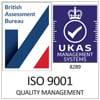When it comes to integrating technology into your business, the options can seem endless, making it challenging to know where to begin. However, having a Marketplace like Bullhorn’s can alleviate much of the uncertainty by simplifying the process.
The Bullhorn Marketplace has undergone extensive development over the last few years, aiming to facilitate three main actions for customers:
- To make more informed and better decisions
- To enable productivity at any time
- To build relationships by providing enhanced customer and candidate experiences
Bullhorn has an expansive network of more than 230 partners in total, each with their technology seamlessly integrated into the platform - the majority of which can be located on Bullhorn's website. The remaining are dedicated development partners who offer specialised solutions tailored to enhance customer value.
Cloudcall's Laura Scott-Davies hosted an insightful discussion in their Blurple Panel series, Bullhorn Marketplace - Discovering Your Perfect Tech Stack. The panel featured Bullhorn Marketplace Partners, including Daniel Locke from Daxtra, Alex Roberts from Kyloe, Sean Hopkins from CloudCall, and Milly Morris from Bullhorn. Together, they discussed key factors for how you can achieve the greatest impact by improving adoption and centralising your data in Bullhorn.
How do you choose the right technology?
Before deciding what tech could benefit your business, it is key that you assess, as Sean Hopkins from CloudCall shared, “where they are on the path to digital transformation.” Establishing your position as either advanced or just beginning, will ultimately inform your business strategy when it comes to leveraging technology to enhance operational processes and drive efficiency.
With a plethora of tools on the market, it is important to understand exactly how any new technology will benefit your business. You need to be able to differentiate between nice-to-have features and essential components that align with your business objectives. Moreover, the success of your tech stack hinges on its adoption. Therefore, you need to ensure that the tech not only helps your team to achieve their KPIs, but enables them to do it more quickly and easily than before.
What should a business be cautious of when implementing new technology?
When making a significant investment in technology, it is important to be cautious of providers who fail to truly comprehend your business objectives. The focus should go beyond mere sales and encompass a genuine understanding of what you are aiming to achieve. Through this, you can expect valuable guidance on building your tech stack in the most effective manner to ensure your success.
Milly Morris from Bullhorn highlighted the need to conduct thorough “due diligence when it comes to understanding the implementation process”. It can sometimes be assumed that integration will happen immediately after a transaction. However, due to the intricate nature of the process, some integrations may take weeks or even months to become fully functional. This is particularly true as these products are often customised to seamlessly align with existing processes within your business.
Having a plan for onboarding is also essential, and part of that is choosing a solution that has been tried and tested. This solution should effectively address the specific pain points and challenges that are unique to your business, enabling a more streamlined and efficient workflow.
Sean Hopkins from CloudCall explained further, stating, “It’s about finding the champions within the organisation who are really going to lead the tech adoption internally. There will always be a couple of people that are more invested in the purchase and making it work for the business, but they can’t do it on their own. Providers should be finding ways to empower and enable users to find success in their investment. Even though it’s a fantastic piece of software you’re offering that delivers a lot of value, if the team using it doesn't see it as such, it’s really difficult to get traction.”
Daniel Locke from Daxtra underscores this by sharing how necessary it is to “involve users in the sales process as early as possible”. As buyers, it is vital to assume part of the responsibility of reassuring your teams. Creating opportunities for them to ask questions and address any concerns they may have regarding new technology will only enhance their confidence, ultimately leading to long-term success. You could achieve this by inviting them to product demos or facilitating calls with the providers you are considering.
How do you measure ROI successfully?
With any new tech, you have to evaluate the reporting capabilities. Take into consideration the insights it provides, such as visibility into user activities within the product. Are people using it? And what are they doing within the product if they are? You can make it successful by tracking the adoption. And, as Milly Morris from Bullhorn urged, prioritise, “benchmarking before implementing new tech”. By documenting your starting point and consistently referring back to your KPIs, you can accurately assess the value of your investment.
Depending on the tech, some products offer a quicker ROI than others. Although generally, as Alex Roberts from Kyloe explained, “ROI is a trick one to measure in any application that you buy. How to truly track return of investment of a platform you've already purchased - it’s going to take ‘X’ number of weeks, months, or a year potentially put in.” Measuring in increments, for example, three months at a time, should allow for you to see a gradual increase in ROI. In other cases, it can take up to the full contract term, after the initial integration of the product before you can assess the ROI, by looking at what was normal prior to the implementation, and what is normal after the fact.
Effective measuring of ROI is also dependent on how data is recorded. For example, if it’s a tool that’s bringing data to it i.e a resourcing or searching and match tool, when you find a candidate or client, make a note that it came from that platform.
Sean Hopkins from CloudCall highlighted the importance of “investing time and resources to learn how to use the software effectively. Providers have to prioritise working with the customers to educate, inform and, ideally, delight them with the capabilities of what they can deliver. For example, creating ‘how to’ hacks, engaging with audiences and users in the right way that will help facilitate a positive response from the users - so when it’s evaluated in six months times, etc. there’s a positive story around that beyond the cold hard numbers.”
Ultimately, the goal is to enhance user experiences. Which can also be done by, as Daniel Locke from Daxtra added, “automating non cash generated activity.” In this, recruiters can reclaim valuable time that can be redirected, allowing them to focus on the personal aspects of their work, such as engaging with clients and candidates.
How do you know you’ve implemented the right technology?
The market offers a multitude of technologies, and while some might provide minor time savings individually, the true benefits emerge when multiple pieces are integrated into a cohesive stack. Being able to use the Bullhorn Marketplace is an instant benefit for a lot of agencies, as there’s an automatic reassurance in their CRM being the single source of truth - having the one platform that everything feeds into.
Sean Hopkins from CloudCall emphasised the advantages of peer-to-peer insights that Bullhorn’s platform provides. “That’s what’s great about the Bullhorn Marketplace because you're within that environment. You can use that to, for example, go to events like Bullhorn Engage, where a collection of partners and other business people come and they learn how these things fit together, and they learn from their peers. There’s a reassurance that you aren’t alone, other people are going on a similar journey even if their business is different to yours.”
Talking to others and understanding their pain points such as, what they spend a lot of time on that could be done by automation, are all necessary when trying to figure out what tech is worth investing in.
Alex Roberts from Kyloe also added, “If possible, trial tech you're considering before making a long term investment and ask questions.” Although considering other users' experiences can be helpful, it’s important to ask the providers detailed questions on how that same tech can work for you. The way in which it integrates with existing processes within your business or how it works with the rest of your tech stack will play a major factor in its effectiveness.
You will also find that a lot of the tech out there can do similar things, but that doesn’t automatically mean it will be the right fit for your company as everyone has their own ways of working. And so, exploring and testing new technology is never a wasted effort. Even if you discover it’s not the perfect fit, the process helps you identify what you do or don’t like. And if you find that you do like it, you have not only confirmed what you need, but you also have the added benefit of having learned how to use it effectively already. This ensures a smoother transition when implementing the right solution long term.
Why consider the Bullhorn Marketplace when choosing your tech stack?
Bullhorn's Marketplace not only hosts numerous providers on a single platform but also simplifies the process for customers looking to make contact. And, as Daniel Locke from Daxtra highlighted, "You can be confident that every provider in the Marketplace has been through a thorough vetting process."
Sean Hopkins from CloudCall expressed that, “The Marketplace is invaluable for two reasons. One being due to Bullhorn’s diverse relationships within the recruiting and staffing industry. Two, having a unified platform also helps create an environment where there is innovation and ideas of what can work together. That’s the benefit of having access to what other tech providers have - you get a super charged experience.”
Being in the Bullhorn Marketplace makes it easier for partners to communicate and develop good working relationships. And so, when building a tech stack, even if you are not utilising a particular piece of technology, the advantage lies in having other partners who can offer guidance and insights on technologies that may not be their own.
Milly Morris from Bullhorn also shared some key factors. “There are 250 people in the sales teams across all of our regions, and the vast majority know a lot about most of our Marketplace partners. So our customers have a bit of a sounding board on partners and can go to their account manager or customer success teams and ask for support. Also, there’s a level of exclusivity as some things aren't available elsewhere. For example, there are certain integrations that have been built just for the Bullhorn CRM.”
Utilising Bullhorn’s Marketplace will allow you to streamline your tech stack choices, freeing up your time to focus on prioritising your recruiters and your business needs.



